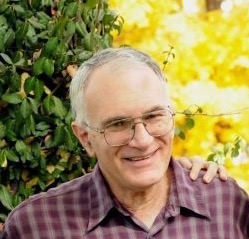Podcast: Play in new window | Download | Embed
Subscribe: RSS
Podcast (parenting-with-a-story-podcast-series): Play in new window | Download | Embed
Subscribe: RSS
 While being courageous can clearly get you places in life, it can be comforting to know that it’s not an absolute requirement. In fact, one of the most successful people I know is a self-described coward. According to Jim Bangel, “the stories of my cowardice are legion” among his family and friends. And it all started on a basketball court in New York City.
While being courageous can clearly get you places in life, it can be comforting to know that it’s not an absolute requirement. In fact, one of the most successful people I know is a self-described coward. According to Jim Bangel, “the stories of my cowardice are legion” among his family and friends. And it all started on a basketball court in New York City.
Jim was fifteen years old and had gone to play basketball at a court behind the local high school. He met up with some boys he knew and they started to play. As Jim tells the story, “A few minutes later, six really bad guys showed up and spoke to the people I was playing with. One of them said, ‘I told you guys to never come to this park again. I own this place. Get out!’
“Well, I knew that wasn’t fair. And for whatever reason, I decided to tell this guy. So of course, I end up getting in a fight with the ringleader of the group. I had to take my glasses off and square off against him. I hit him once in the stomach and he doubled over. I immediately started feeling sorry for him. But he got up and hit me back. Several times. He eventually broke my nose, and I ended up blacking out for two or three minutes right there on the court. I was a bloody mess. I had to wear a brace for my nose for a month while it healed. Not a pleasant experience in high school, having to explain to everyone how I’d gotten my nose broken losing a fight.”
That experience taught Jim that typical Hollywood heroism wasn’t all it was cracked up to be. “It was the first time in my life I stepped up to be brave, and look what happened to me. I was never that brave to begin with. But after that I was about as cowardly as you could possibly imagine.”
But Jim still had ambitions and wanted to do well in life. So he learned to live what he calls “the life of a smart coward.” He had to learn how to do risky things without taking risk, and he developed several strategies for doing that.
One of his most effective strategies was humor.
Jim recalls, “In the army, I became the funniest guy in basic training. I used humor to make the leaders like me, and then I got away with anything. Like if we were sitting on the sidewalk in front of the barracks cleaning our guns and an officer walked by. We were supposed to all stand up and salute. But it was hot and I was tired, and I didn’t want to keep standing up every time someone walked by. So I would just roll over onto my back and lay down stiff as a board and salute the sky. They laughed every time, so I never had to stand up.”
Later, in his working career, Jim intentionally befriended the leaders he wanted to influence. After reading Dale Carnegie’s classic book How to Win Friends and Influence People, Jim would visit his managers and do two things: 1) listen, and 2) share humorous accounts of his days in the army or getting beat up on the basketball court. The more time he got to spend with them, and the more he listened, the more he learned about how the business worked and how he could help.
Next, Jim began to intentionally use storytelling to influence the executives. He wrote monthly memos with stories of characters with tongue-in-cheek names like Ed Zecutive and Max Profit who loosely resembled the senior leaders of the company. And through those stories, he delivered his (sometimes controversial) recommendations from the mouths of his characters. That, plus the relationships he’d developed with those senior managers, allowed him to discuss topics usually deemed too sacred for direct conversation.
He eventually became one of the most influential people at his company, with the ear of the most senior management. The combination of those tactics (humor, friendship, listening, and storytelling) was powerful. So much so that an officer of the company once introduced him by saying, “Jim is our court jester, because he’s the only one who can tell the truth to the king” (or in this case, the CEO).
What Jim had found was a way to do things most people considered brave, like standing up to the king (or CEO, or schoolyard bully), but without getting his nose broken.
As with all these stories, I encourage you to share this with your kids. Then have a discussion about it. Here are some questions to get you started.
- Has anyone ever picked on you or tried to start a fight with you? What did you do?
- What do you think about Jim’s strategies to avoid getting in fights with bigger kids or his commanding officer or his boss at work?
- Do you know anyone who uses these or similar strategies effectively? How do they do it?
- What kind of situation would warrant standing up and fighting instead?
[You can find this and over 100 other character-building stories in my book, Parenting with a Story.]
—
 Paul Smith is one of the world’s leading experts on business storytelling. He’s a keynote speaker, storytelling coach, and bestselling author of the books Lead with a Story and Parenting with a Story.
Paul Smith is one of the world’s leading experts on business storytelling. He’s a keynote speaker, storytelling coach, and bestselling author of the books Lead with a Story and Parenting with a Story.

 Connect with him via email here.
Connect with him via email here.
Follow him on Facebook, LinkedIn, Twitter.
Sign up for his newsletter here to get one new story a week delivered to your inbox.

